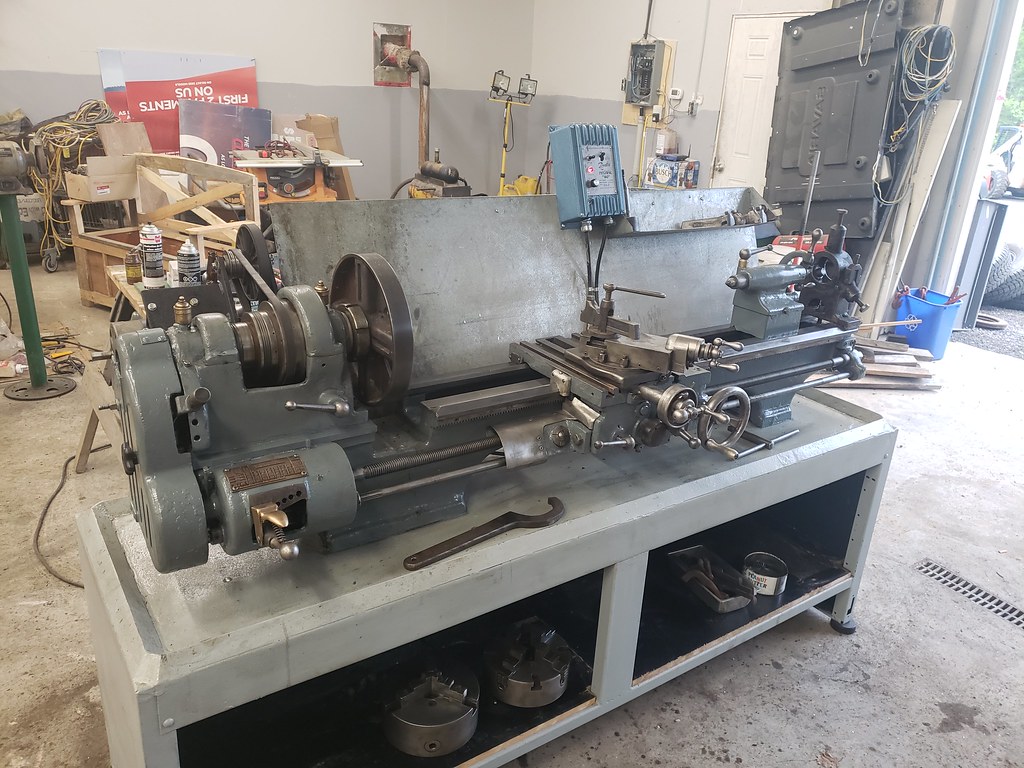Good day folks.
As some of you probably saw in my "introduce yourself" thread, I've acquired a line shaft driven Fay and Scott that looks like it's a 14" x 40" machine. I've got some belting and the jack shaft with hangers. What I also have is a 2HP 120/240v single phase motor that looks to be about 1955 vintage. It works, I've pulled it apart and cleaned the bearings of old sludge, etc. But.... What I'm NOT looking forward to is mounting that up in the rafters to drive the jack shaft. Modern equivalents look to be about 1/2 the size and weight of that behemoth.
My question is, for full capacity on a 14x40 lathe, how much is enough power? I've looked at modern 14x40 machines and they appear to be in the 1.5 - 2 HP range. Now I don't know enough to know if those are horribly under powered or if there is some efficiency magic being done in the modern variable speed controls. Also I'm not sufficiently learned about line shaft setups but I would have to think that there is some power transmission loss in the old leather belts, babbitt bearings in the jack shafts and lathe spindle, etc. Also, and this is showing my ignorance on the topic, are motor ratings on the consumed (electrical) energy or on the delivered (mechanical) energy? Thus would a 60 year old 2HP motor deliver equivalent results to a modern one or would it be horribly inefficient? ?
Someday I've got this crazy idea to hook up a 3 phase motor with a VFD to give "infinite" spindle variability.
Thanks folks
Stew
As some of you probably saw in my "introduce yourself" thread, I've acquired a line shaft driven Fay and Scott that looks like it's a 14" x 40" machine. I've got some belting and the jack shaft with hangers. What I also have is a 2HP 120/240v single phase motor that looks to be about 1955 vintage. It works, I've pulled it apart and cleaned the bearings of old sludge, etc. But.... What I'm NOT looking forward to is mounting that up in the rafters to drive the jack shaft. Modern equivalents look to be about 1/2 the size and weight of that behemoth.
My question is, for full capacity on a 14x40 lathe, how much is enough power? I've looked at modern 14x40 machines and they appear to be in the 1.5 - 2 HP range. Now I don't know enough to know if those are horribly under powered or if there is some efficiency magic being done in the modern variable speed controls. Also I'm not sufficiently learned about line shaft setups but I would have to think that there is some power transmission loss in the old leather belts, babbitt bearings in the jack shafts and lathe spindle, etc. Also, and this is showing my ignorance on the topic, are motor ratings on the consumed (electrical) energy or on the delivered (mechanical) energy? Thus would a 60 year old 2HP motor deliver equivalent results to a modern one or would it be horribly inefficient? ?
Someday I've got this crazy idea to hook up a 3 phase motor with a VFD to give "infinite" spindle variability.
Thanks folks
Stew


